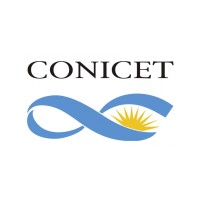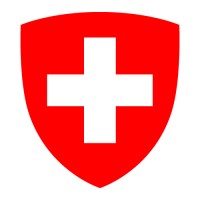
U.S. Department of Energy (DOE) Company Cyber Security Posture
energy.govThe mission of the Department of Energy is to ensure America's security and prosperity by addressing its energy, environmental, and nuclear challenges through transformative science and technology solutions. Goal 1: Science and Energy — Advance foundational science, innovate energy technologies, and inform data driven policies that enhance U.S. economic growth and job creation, energy security, and environmental quality. Goal 2: Nuclear Security — Strengthen national security by maintaining and modernizing the nuclear stockpile and nuclear security infrastructure, reducing global nuclear threats, providing for nuclear propulsion, improving physical and cybersecurity, and strengthening key science, technology, and engineering capabilities Goal 3: Management and Performance — Position the Department of Energy to meet the challenges of the 21st century and the nation’s Manhattan Project and Cold War legacy responsibilities by employing effective management and refining operational and support capabilities to pursue departmental missions
UDE( Company Details
energy
7534 employees
281713
922
Government Administration
energy.gov
Scan still pending
U.S_7849811
In-progress
Between 900 and 1000
This score is AI-generated and less favored by cyber insurers, who prefer the TPRM score.
 UDE( Global Score
UDE( Global Score.png)

U.S. Department of Energy (DOE) Company Scoring based on AI Models
| Model Name | Date | Description | Current Score Difference | Score |
|---|---|---|---|---|
| AVERAGE-Industry | 03-12-2025 | This score represents the average cybersecurity rating of companies already scanned within the same industry. It provides a benchmark to compare an individual company's security posture against its industry peers. | N/A | Between 900 and 1000 |
U.S. Department of Energy (DOE) Company Cyber Security News & History
| Entity | Type | Severity | Impact | Seen | Url ID | Details | View |
|---|---|---|---|---|---|---|---|
| U.S. Department of Energy (DOE) | Ransomware | 85 | 3 | 06/2023 | USD61125623 | Link | |
Rankiteo Explanation : Attack with significant impact with internal employee data leaksDescription: The U.S. Department of Energy received ransom demands from the extortion gang Cl0p, which has ties to Russia, at both its nuclear waste site and scientific education facility that were recently targeted by a widespread hacking campaign. After hackers infiltrated the two DOE institutions' networks via a security hole in the file sharing programme MOVEit sharing, data was compromised at both locations. Since Burlington, Massachusetts-based Progress Software discovered the security hole in its MOVEit Transfer software last month, a variety of victims—from U.S. government departments to the UK's telecom regulator and petroleum giant Shell—have come forward. The representative claimed that the DOE received ransom demands in emails addressed to each facility, although she did not specify how much money was requested. | |||||||
U.S. Department of Energy (DOE) Company Subsidiaries

The mission of the Department of Energy is to ensure America's security and prosperity by addressing its energy, environmental, and nuclear challenges through transformative science and technology solutions. Goal 1: Science and Energy — Advance foundational science, innovate energy technologies, and inform data driven policies that enhance U.S. economic growth and job creation, energy security, and environmental quality. Goal 2: Nuclear Security — Strengthen national security by maintaining and modernizing the nuclear stockpile and nuclear security infrastructure, reducing global nuclear threats, providing for nuclear propulsion, improving physical and cybersecurity, and strengthening key science, technology, and engineering capabilities Goal 3: Management and Performance — Position the Department of Energy to meet the challenges of the 21st century and the nation’s Manhattan Project and Cold War legacy responsibilities by employing effective management and refining operational and support capabilities to pursue departmental missions
Access Data Using Our API

Get company history
.png)
UDE( Cyber Security News
US lawmakers propose legislation to expand cyber threat coordination across energy sector
Two U.S. Senators have introduced legislation designed to deepen cybersecurity collaboration within the nation's energy infrastructure.
Bipartisan bill proposes $50M cyber threat analysis program for energy sector
Bipartisan legislation proposed in the Senate would allocate $50 million from fiscal year 2025 to 2029 to improve cyber security information ...
Cybersecurity
The U.S. Department of Energy (DOE) Cybersecurity Strategy is a plan for an effective, collaborative, enterprise-wide cybersecurity posture and defense.
DOE names Fitzsimmons director of CESER in push to secure U.S. energy infrastructure
The Digital Divide: Electric utilities to the rescue? RECEIVE WEEKLY NEWSLETTER. Please leave this field empty.
Cybersecurity Accelerator Expands To Speed Commercialization of Department of Energy Technologies
New Critical Energy Cybersecurity Accelerator Track Focuses on Advancing Government Technologies That Fill Critical Cybersecurity Technical Gaps.
DOE forms new office to bolster energy infrastructure and support AI growth
The US Department of Energy (DOE) has created a new office aimed at strengthening the country's energy infrastructure and supporting its ...
The U.S. Department of Energy Announces Xander Newlun as the 2025 Conquer the Hill Command Competition Winner
The U.S. Department of Energy Announces Xander Newlun as the 2025 Conquer the Hill Command Competition Winner · A realistic and engaging ...
About the Office of Cybersecurity, Energy Security, and Emergency Response
CESER's focus is preparedness and response activities to natural and man-made threats, ensuring a stronger, more prosperous, and secure future for the Nation.
DOE announces Alex Fitzsimmons will lead CESER, as agency focuses on bolstering energy security, accelerates AI leadership
Alex Fitzsimmons, currently serving as DOE Chief of Staff, will lead the Office of Cybersecurity, Energy Security, and Emergency Response (CESER) ...

UDE( Similar Companies

USDA
The United States Department of Agriculture is the United States federal executive department responsible for developing and executing U.S. federal government policy on farming, agriculture, and food. It aims to meet the needs of farmers and ranchers, promote agricultural trade and production, work

Assurance Maladie
Travailler à l’Assurance Maladie, c’est donner une nouvelle dimension à votre métier et agir au quotidien pour la protection de notre système de santé. Participez à une grande diversité de projets dans un cadre bienveillant et soyez fier de contribuer à une mission essentielle : agir ensemble, prot

CONICET
El Consejo Nacional de Investigaciones Científicas y Técnicas (CONICET) es el principal organismo dedicado a la promoción de la ciencia y la tecnología en la Argentina. Su actividad se desarrolla en cuatro grandes áreas: • Ciencias agrarias, ingeniería y de materiales • Ciencias biológica

South Lanarkshire Council
South Lanarkshire is a fantastic place to live and work. Situated at the heart of Scotland’s economic powerhouse, South Lanarkshire has so much to offer as a region to live, learn, raise a family, enjoy recreational activities and as a place for work and business. From the commercial and indust

Gouvernement du Québec – Carrières
Travailler dans la fonction publique du Québec, c'est plus qu'une carrière! Réparti(e)s dans une vingtaine de ministères et une soixantaine d'organismes à travers le Québec, tous les gestes posés par les employé(e)s de la fonction publique façonnent l’avenir de la société et contribuent à améliorer

Swiss Federal Administration
Working for Switzerland Seven departments, the Federal Chancellery and around 70 administrative units make up the Federal Administration. With around 38,000 employees, it is one of the largest employers in Switzerland. People from all regions of the country work in the Federal Administration un

Frequently Asked Questions (FAQ) on Cybersecurity Incidents
UDE( CyberSecurity History Information
Total Incidents: According to Rankiteo, UDE( has faced 1 incidents in the past.
Incident Types: The types of cybersecurity incidents that have occurred include ['Ransomware'].
Total Financial Loss: The total financial loss from these incidents is estimated to be {total_financial_loss}.
Cybersecurity Posture: The company's overall cybersecurity posture is described as The mission of the Department of Energy is to ensure America's security and prosperity by addressing its energy, environmental, and nuclear challenges through transformative science and technology solutions. Goal 1: Science and Energy — Advance foundational science, innovate energy technologies, and inform data driven policies that enhance U.S. economic growth and job creation, energy security, and environmental quality. Goal 2: Nuclear Security — Strengthen national security by maintaining and modernizing the nuclear stockpile and nuclear security infrastructure, reducing global nuclear threats, providing for nuclear propulsion, improving physical and cybersecurity, and strengthening key science, technology, and engineering capabilities Goal 3: Management and Performance — Position the Department of Energy to meet the challenges of the 21st century and the nation’s Manhattan Project and Cold War legacy responsibilities by employing effective management and refining operational and support capabilities to pursue departmental missions.
Detection and Response: The company detects and responds to cybersecurity incidents through {description_of_detection_and_response_process}.
Incident Details
Incident 1: Ransomware Attack
Title: {Incident_Title}
Description: {Brief_description_of_the_incident}
Date Detected: {Detection_Date}
Date Publicly Disclosed: {Disclosure_Date}
Date Resolved: {Resolution_Date}
Type: {Type_of_Attack}
Attack Vector: {Attack_Vector}
Vulnerability Exploited: {Vulnerability}
Threat Actor: {Threat_Actor}
Motivation: {Motivation}
Incident 2: Data Breach
Title: {Incident_Title}
Description: {Brief_description_of_the_incident}
Date Detected: {Detection_Date}
Date Publicly Disclosed: {Disclosure_Date}
Date Resolved: {Resolution_Date}
Type: {Type_of_Attack}
Attack Vector: {Attack_Vector}
Vulnerability Exploited: {Vulnerability}
Threat Actor: {Threat_Actor}
Motivation: {Motivation}
Common Attack Types: As of now, the company has not encountered any reported incidents involving common cyberattacks.
Identification of Attack Vectors: The company identifies the attack vectors used in incidents through {description_of_identification_process}.
Impact of the Incidents
Incident 1: Ransomware Attack
Financial Loss: {Financial_Loss}
Data Compromised: {Data_Compromised}
Systems Affected: {Systems_Affected}
Downtime: {Downtime}
Operational Impact: {Operational_Impact}
Conversion Rate Impact: {Conversion_Rate_Impact}
Revenue Loss: {Revenue_Loss}
Customer Complaints: {Customer_Complaints}
Brand Reputation Impact: {Brand_Reputation_Impact}
Legal Liabilities: {Legal_Liabilities}
Identity Theft Risk: {Identity_Theft_Risk}
Payment Information Risk: {Payment_Information_Risk}
Incident 2: Data Breach
Financial Loss: {Financial_Loss}
Data Compromised: {Data_Compromised}
Systems Affected: {Systems_Affected}
Downtime: {Downtime}
Operational Impact: {Operational_Impact}
Conversion Rate Impact: {Conversion_Rate_Impact}
Revenue Loss: {Revenue_Loss}
Customer Complaints: {Customer_Complaints}
Brand Reputation Impact: {Brand_Reputation_Impact}
Legal Liabilities: {Legal_Liabilities}
Identity Theft Risk: {Identity_Theft_Risk}
Payment Information Risk: {Payment_Information_Risk}
Average Financial Loss: The average financial loss per incident is {average_financial_loss}.
Commonly Compromised Data Types: The types of data most commonly compromised in incidents are {list_of_commonly_compromised_data_types}.
Incident 1: Ransomware Attack
Entity Name: {Entity_Name}
Entity Type: {Entity_Type}
Industry: {Industry}
Location: {Location}
Size: {Size}
Customers Affected: {Customers_Affected}
Incident 2: Data Breach
Entity Name: {Entity_Name}
Entity Type: {Entity_Type}
Industry: {Industry}
Location: {Location}
Size: {Size}
Customers Affected: {Customers_Affected}
Response to the Incidents
Incident 1: Ransomware Attack
Incident Response Plan Activated: {Yes/No}
Third Party Assistance: {Yes/No}
Law Enforcement Notified: {Yes/No}
Containment Measures: {Containment_Measures}
Remediation Measures: {Remediation_Measures}
Recovery Measures: {Recovery_Measures}
Communication Strategy: {Communication_Strategy}
Adaptive Behavioral WAF: {Adaptive_Behavioral_WAF}
On-Demand Scrubbing Services: {On_Demand_Scrubbing_Services}
Network Segmentation: {Network_Segmentation}
Enhanced Monitoring: {Enhanced_Monitoring}
Incident 2: Data Breach
Incident Response Plan Activated: {Yes/No}
Third Party Assistance: {Yes/No}
Law Enforcement Notified: {Yes/No}
Containment Measures: {Containment_Measures}
Remediation Measures: {Remediation_Measures}
Recovery Measures: {Recovery_Measures}
Communication Strategy: {Communication_Strategy}
Adaptive Behavioral WAF: {Adaptive_Behavioral_WAF}
On-Demand Scrubbing Services: {On_Demand_Scrubbing_Services}
Network Segmentation: {Network_Segmentation}
Enhanced Monitoring: {Enhanced_Monitoring}
Incident Response Plan: The company's incident response plan is described as {description_of_incident_response_plan}.
Third-Party Assistance: The company involves third-party assistance in incident response through {description_of_third_party_involvement}.
Data Breach Information
Incident 2: Data Breach
Type of Data Compromised: {Type_of_Data}
Number of Records Exposed: {Number_of_Records}
Sensitivity of Data: {Sensitivity_of_Data}
Data Exfiltration: {Yes/No}
Data Encryption: {Yes/No}
File Types Exposed: {File_Types}
Personally Identifiable Information: {Yes/No}
Prevention of Data Exfiltration: The company takes the following measures to prevent data exfiltration: {description_of_prevention_measures}.
Handling of PII Incidents: The company handles incidents involving personally identifiable information (PII) through {description_of_handling_process}.
Ransomware Information
Incident 1: Ransomware Attack
Ransom Demanded: {Ransom_Amount}
Ransom Paid: {Ransom_Paid}
Ransomware Strain: {Ransomware_Strain}
Data Encryption: {Yes/No}
Data Exfiltration: {Yes/No}
Ransom Payment Policy: The company's policy on paying ransoms in ransomware incidents is described as {description_of_ransom_payment_policy}.
Data Recovery from Ransomware: The company recovers data encrypted by ransomware through {description_of_data_recovery_process}.
Regulatory Compliance
Incident 1: Ransomware Attack
Regulations Violated: {Regulations_Violated}
Fines Imposed: {Fines_Imposed}
Legal Actions: {Legal_Actions}
Regulatory Notifications: {Regulatory_Notifications}
Incident 2: Data Breach
Regulations Violated: {Regulations_Violated}
Fines Imposed: {Fines_Imposed}
Legal Actions: {Legal_Actions}
Regulatory Notifications: {Regulatory_Notifications}
Regulatory Frameworks: The company complies with the following regulatory frameworks regarding cybersecurity: {list_of_regulatory_frameworks}.
Ensuring Regulatory Compliance: The company ensures compliance with regulatory requirements through {description_of_compliance_measures}.
Lessons Learned and Recommendations
Incident 1: Ransomware Attack
Lessons Learned: {Lessons_Learned}
Incident 2: Data Breach
Lessons Learned: {Lessons_Learned}
Incident 1: Ransomware Attack
Recommendations: {Recommendations}
Incident 2: Data Breach
Recommendations: {Recommendations}
Key Lessons Learned: The key lessons learned from past incidents are {list_of_key_lessons_learned}.
Implemented Recommendations: The company has implemented the following recommendations to improve cybersecurity: {list_of_implemented_recommendations}.
References
Additional Resources: Stakeholders can find additional resources on cybersecurity best practices at {list_of_additional_resources}.
Investigation Status
Incident 1: Ransomware Attack
Investigation Status: {Investigation_Status}
Incident 2: Data Breach
Investigation Status: {Investigation_Status}
Communication of Investigation Status: The company communicates the status of incident investigations to stakeholders through {description_of_communication_process}.
Stakeholder and Customer Advisories
Incident 1: Ransomware Attack
Stakeholder Advisories: {Stakeholder_Advisories}
Customer Advisories: {Customer_Advisories}
Incident 2: Data Breach
Stakeholder Advisories: {Stakeholder_Advisories}
Customer Advisories: {Customer_Advisories}
Advisories Provided: The company provides the following advisories to stakeholders and customers following an incident: {description_of_advisories_provided}.
Initial Access Broker
Incident 1: Ransomware Attack
Entry Point: {Entry_Point}
Reconnaissance Period: {Reconnaissance_Period}
Backdoors Established: {Backdoors_Established}
High Value Targets: {High_Value_Targets}
Data Sold on Dark Web: {Yes/No}
Incident 2: Data Breach
Entry Point: {Entry_Point}
Reconnaissance Period: {Reconnaissance_Period}
Backdoors Established: {Backdoors_Established}
High Value Targets: {High_Value_Targets}
Data Sold on Dark Web: {Yes/No}
Monitoring and Mitigation of Initial Access Brokers: The company monitors and mitigates the activities of initial access brokers through {description_of_monitoring_and_mitigation_measures}.
Post-Incident Analysis
Incident 1: Ransomware Attack
Root Causes: {Root_Causes}
Corrective Actions: {Corrective_Actions}
Incident 2: Data Breach
Root Causes: {Root_Causes}
Corrective Actions: {Corrective_Actions}
Post-Incident Analysis Process: The company's process for conducting post-incident analysis is described as {description_of_post_incident_analysis_process}.
Corrective Actions Taken: The company has taken the following corrective actions based on post-incident analysis: {list_of_corrective_actions_taken}.
Additional Questions
General Information
Ransom Payment History: The company has {paid/not_paid} ransoms in the past.
Last Ransom Demanded: The amount of the last ransom demanded was {last_ransom_amount}.
Last Attacking Group: The attacking group in the last incident was {last_attacking_group}.
Incident Details
Most Recent Incident Detected: The most recent incident detected was on {most_recent_incident_detected_date}.
Most Recent Incident Publicly Disclosed: The most recent incident publicly disclosed was on {most_recent_incident_publicly_disclosed_date}.
Most Recent Incident Resolved: The most recent incident resolved was on {most_recent_incident_resolved_date}.
Impact of the Incidents
Highest Financial Loss: The highest financial loss from an incident was {highest_financial_loss}.
Most Significant Data Compromised: The most significant data compromised in an incident was {most_significant_data_compromised}.
Most Significant System Affected: The most significant system affected in an incident was {most_significant_system_affected}.
Response to the Incidents
Third-Party Assistance in Most Recent Incident: The third-party assistance involved in the most recent incident was {third_party_assistance_in_most_recent_incident}.
Containment Measures in Most Recent Incident: The containment measures taken in the most recent incident were {containment_measures_in_most_recent_incident}.
Data Breach Information
Most Sensitive Data Compromised: The most sensitive data compromised in a breach was {most_sensitive_data_compromised}.
Number of Records Exposed: The number of records exposed in the most significant breach was {number_of_records_exposed}.
Ransomware Information
Highest Ransom Demanded: The highest ransom demanded in a ransomware incident was {highest_ransom_demanded}.
Highest Ransom Paid: The highest ransom paid in a ransomware incident was {highest_ransom_paid}.
Regulatory Compliance
Highest Fine Imposed: The highest fine imposed for a regulatory violation was {highest_fine_imposed}.
Most Significant Legal Action: The most significant legal action taken for a regulatory violation was {most_significant_legal_action}.
Lessons Learned and Recommendations
Most Significant Lesson Learned: The most significant lesson learned from past incidents was {most_significant_lesson_learned}.
Most Significant Recommendation Implemented: The most significant recommendation implemented to improve cybersecurity was {most_significant_recommendation_implemented}.
References
Most Recent Source: The most recent source of information about an incident is {most_recent_source}.
Most Recent URL for Additional Resources: The most recent URL for additional resources on cybersecurity best practices is {most_recent_url}.
Investigation Status
Current Status of Most Recent Investigation: The current status of the most recent investigation is {current_status_of_most_recent_investigation}.
Stakeholder and Customer Advisories
Most Recent Stakeholder Advisory: The most recent stakeholder advisory issued was {most_recent_stakeholder_advisory}.
Most Recent Customer Advisory: The most recent customer advisory issued was {most_recent_customer_advisory}.
Initial Access Broker
Most Recent Entry Point: The most recent entry point used by an initial access broker was {most_recent_entry_point}.
Most Recent Reconnaissance Period: The most recent reconnaissance period for an incident was {most_recent_reconnaissance_period}.
Post-Incident Analysis
Most Significant Root Cause: The most significant root cause identified in post-incident analysis was {most_significant_root_cause}.
Most Significant Corrective Action: The most significant corrective action taken based on post-incident analysis was {most_significant_corrective_action}.
What Do We Measure?
















Every week, Rankiteo analyzes billions of signals to give organizations a sharper, faster view of emerging risks. With deeper, more actionable intelligence at their fingertips, security teams can outpace threat actors, respond instantly to Zero-Day attacks, and dramatically shrink their risk exposure window.
These are some of the factors we use to calculate the overall score:
Identify exposed access points, detect misconfigured SSL certificates, and uncover vulnerabilities across the network infrastructure.
Gain visibility into the software components used within an organization to detect vulnerabilities, manage risk, and ensure supply chain security.
Monitor and manage all IT assets and their configurations to ensure accurate, real-time visibility across the company's technology environment.
Leverage real-time insights on active threats, malware campaigns, and emerging vulnerabilities to proactively defend against evolving cyberattacks.




